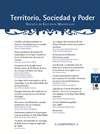Resumen
Resumen: El artículo aborda los mecanismos de formación del pequeño dominio hacendístico detentado por san Rosendo y su familia en la Asturias de los siglos ix y x. Nuestro acercamiento trata de conciliar los aspectos jurídicos del proceso con su reflejo en el territorio, aunando fuentes textuales y arqueológicas y estableciendo algunas pautas explicativas. De igual forma, analiza a través de ellos el panorama del poblamiento altomedieval en Asturias y su período de génesis.
Palabras clave: reino asturleonés, aristocracia, bases de poder, organización territorial, dominio patrimonial, villas, poblamiento altomedieval.
Abstract: San Rosendo is the most important aristocrat of x century in the kingdom of Asturias and Leon. Abbot of the monastery of San Salvador de Celanova, bishop of Mondoñedo, supporter in the reform of the prebenedictine monasticism, he ocuppied moreover high political positions and influenced powerfully in the government of the kings. His family has got a great amount of properties in the territories of Galicia and Portugal. Next to them, a small lot of settlements placed in the asturiense territory, the original center of the kingdom of Asturias. This article has allowed to locate them, and it has reconstructed the mechanisms of formation of the aristocratic dominion. The set was formed by the villages of Cordovarium (Cordovero, council of Pravia), Canneto (Cañéu, council of Pravia), Quintonios (Quintoños, council of Salas), Edia (Hevia, council of Siero) and Parias (Pola de L.lena, council of L.lena). The characteristics of dispersion show common features. All of them are situated in territories with numerous properties of the royal family, near the old sedes regiae of the kingdom of Asturias (Pravia and Oviedo). On the other hand, they constitute the test of expansion of the settlements towards marginal spaces, although communicated with centers of ancient population. This expansion takes place in a phase previous to ix century. The origins of the property can go back to San Rosendo’s greats-grandfather and grandparents, count Gaton and his wife Egilo and count Hermenegildo Gutierrez, in the middle of ix century. These aristocrats connect by means of a married policy with the regal family and appear like in faithfuls of the kings in military an political positions. Most of Asturian villas would granted possibly like payment of their loyalty, under formula of the munificencia regis. However the example of Cordovarium is very singular. This villa is a foundation of San Rosendo’s family in a landscape wooded, near the royal court of Pravia. The analisis of its agrarian structures allows to observe the caracteristics of the early medieval village, with very precise boundaries and a space of old cultivation, named La Llosa. Cordovarium produces a new articulation of the space, so that in their surroundings other aristocratic villas arise between x and xi century. The application of the Gothic Lex in the inheritance of the properties causes that these enter in a process of fragmentation from end of ix century. Nevertheless, the deep influence of San Rosendo in his family causes that the «holy» aristocrat concentrates a good number of lots. Really, the properties of San Rosendo prove the existence of spaces very hierarchized in ix and x centuries, organized around villages that constitute bases of power for the social dominion of the landscape.
Keywords: Kingdom of Asturias and León, aristocracy, bases of power, territorial organization, patrimonial dominion, early medieval settlements.

